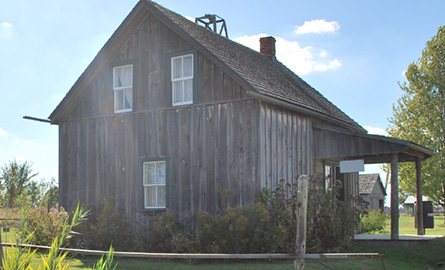Current Exhibits
More

Main Building
Start your visit with our short video in our theatre room, The Spark the Ignited the World. Engage with our interactive displays, including the International Drillers Tent, and learn our story through the interpretation of our artifacts. Move your visit outside and explore our museum grounds.
Our main gallery informs visitors about:
- the natural environment leading to the trapping of oil;
- the evolution of lamps and illuminating oil and lubricants;
- pioneering drilling practices, tools and refining;
- life in an oil town in the first years of production; and
- the relationship of local oil producing area to the international oil industry.

Historic Buildings
Since our opening in 1960, we have acquired additional structures and buildings to enhance the story of oil heritage at the Museum. Explore our historic buildings page and dive into the fascinating stories behind these structures!
Please note that our outbuildings are only open during our summer hours which run from May long weekend until October 31.


 Subscribe to this page
Subscribe to this page